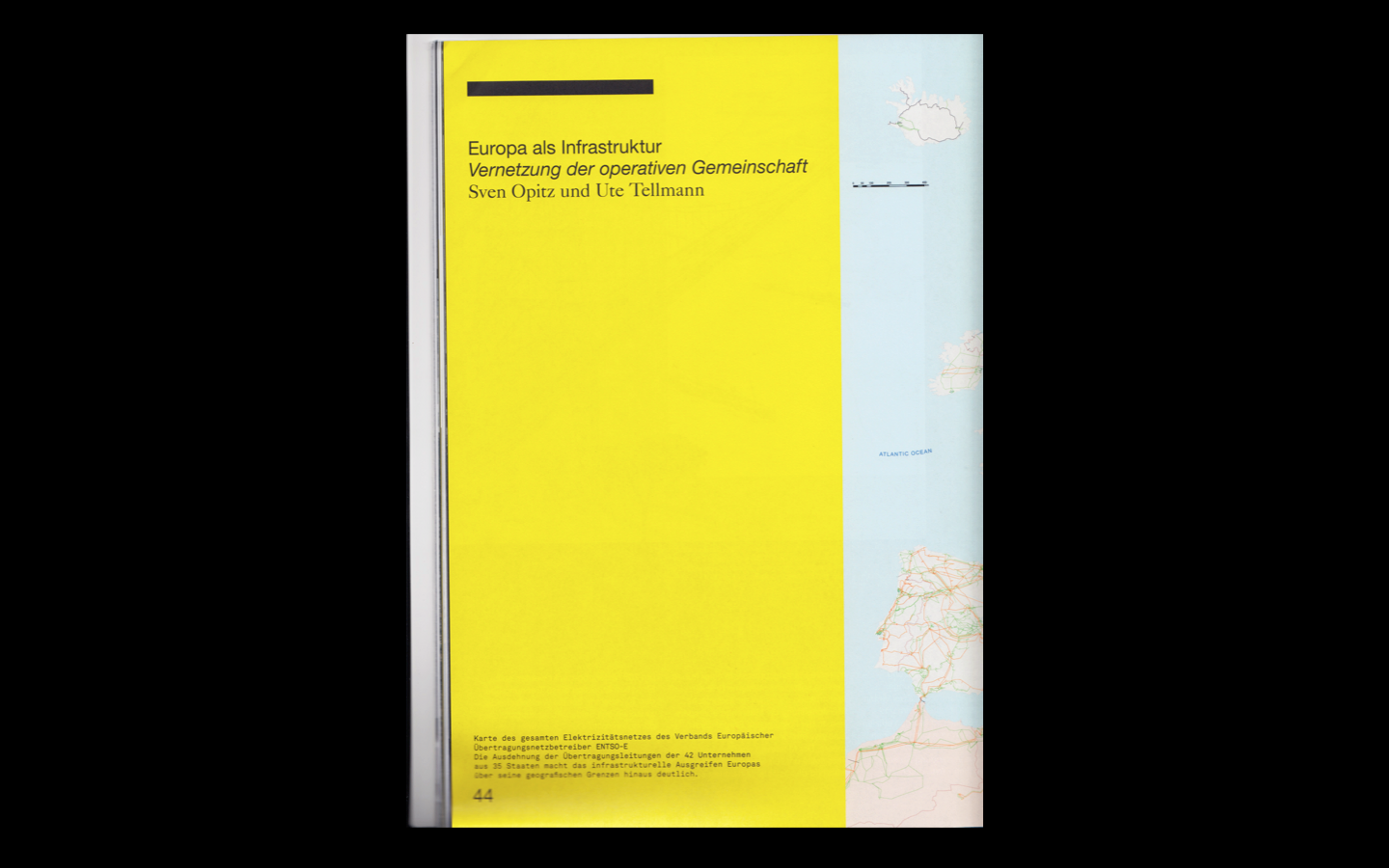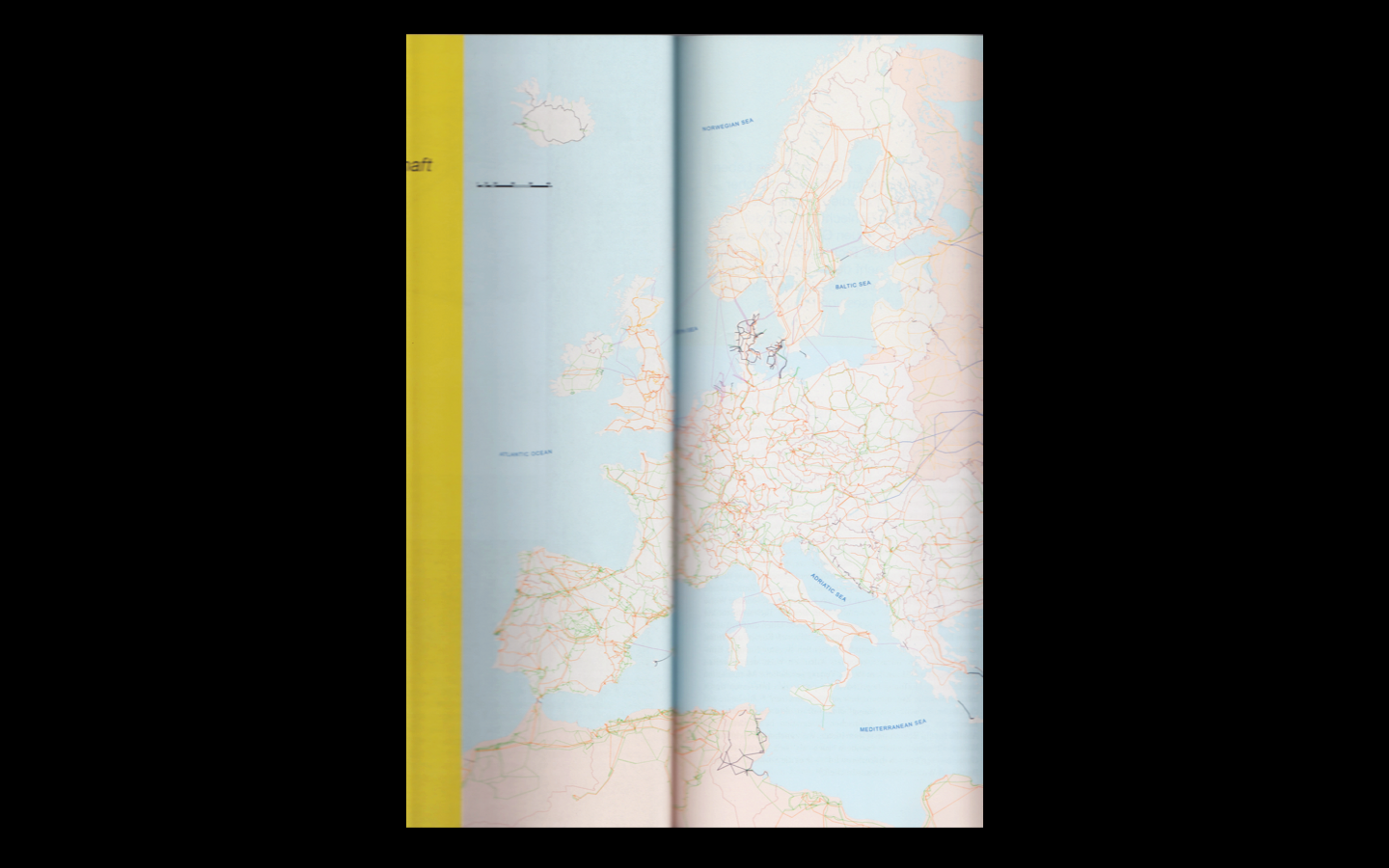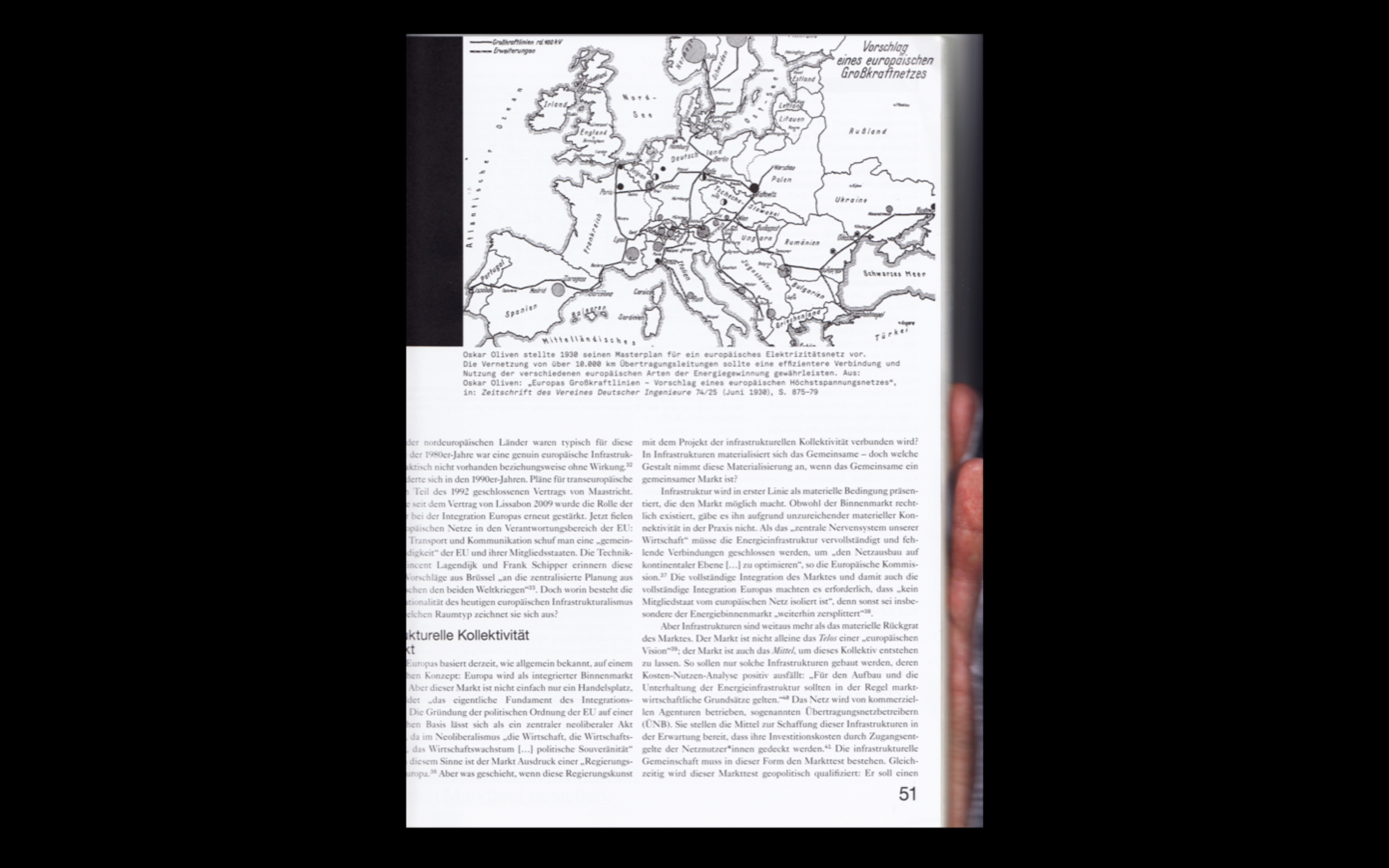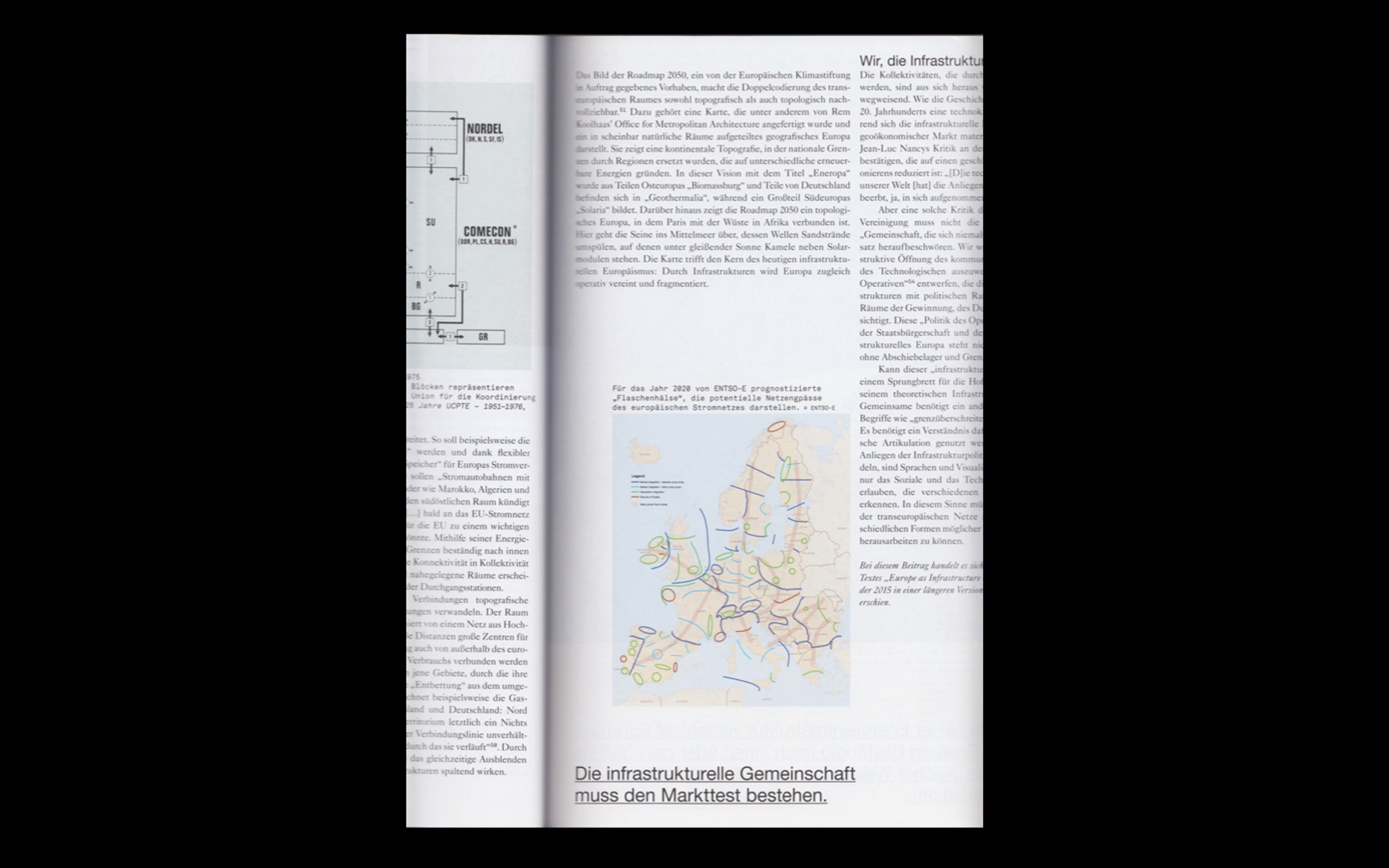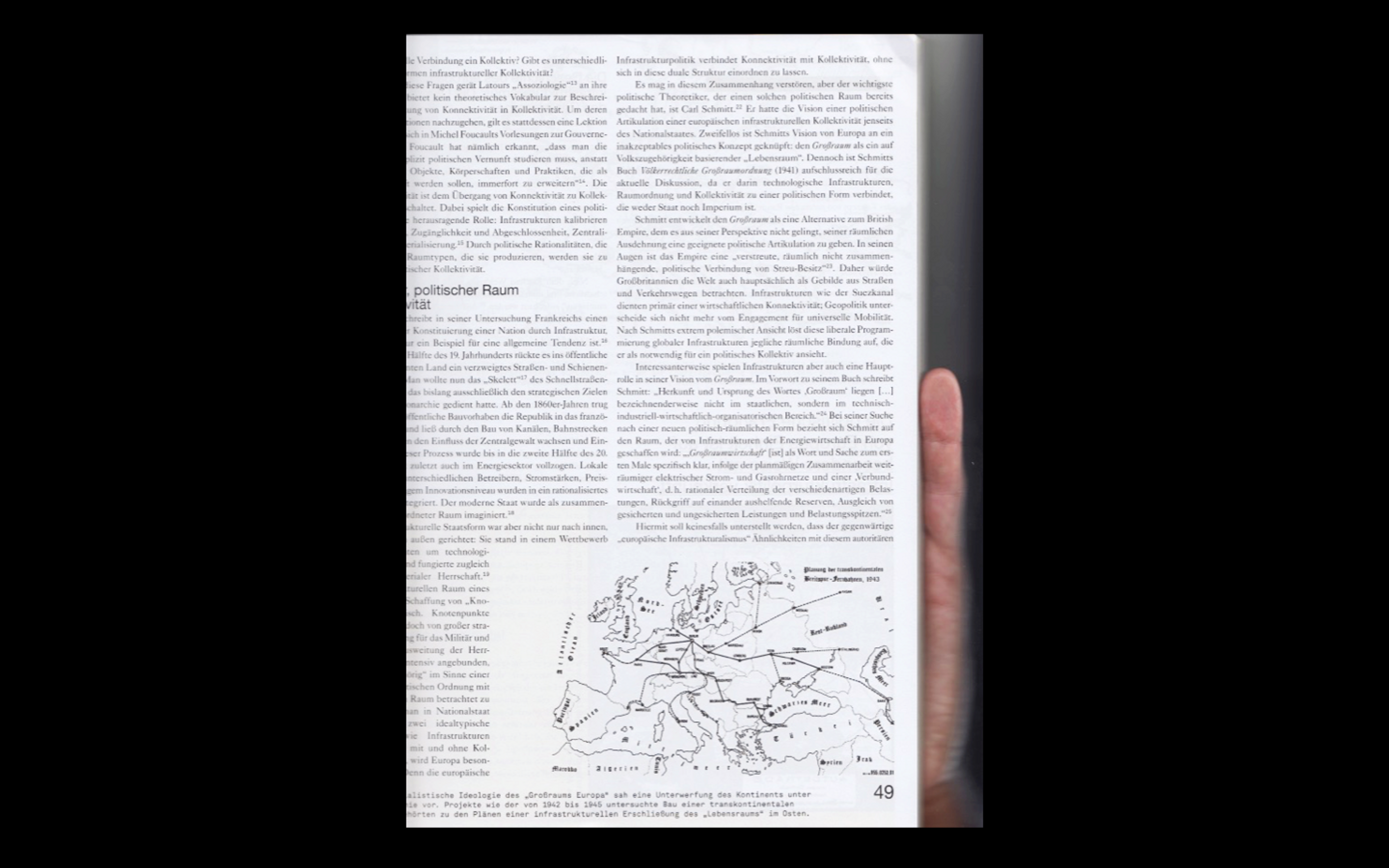Europe as Infrastructure
While reading ARCH+ 239: Europa – Infrastrukturen der Externalisierung, I came across an interesting article by (political) sociologists Sven Opitz and Ute Tellmann who write about the central role of infrastructure in the creation of a unified Europe. First published in English in 2015 in the South Atlantic Quartely under the title 'Europe as Infrastructure: Networking the Operative Community', the authors describe infrastructure as both a physical and a political construct, which generates actual connectivity and a sense of collectivity.
They write that "As political technologies, infrastructures configure and intervene into the problem space of collective existence." At the same time, they question the extend to which infrastructure can generate this sense of collectivity: "Can we derive the notion of collectivity solely from technical connectivity? Is any infrastructural connection constitutive of a collective? Are there different ways of articulating an infrastructural connectivity as collectivity?"
Although they don't provide straightforward answers to these - and many other - relevant questions, they do point in the direction of an alternative understanding of infrastructure, against the idea that European infrastructure should be defined as "a 'long distance' and 'high voltage' network (...) that favors and fractures a unifying gaze of the European continent." Instead, they propose to re-envision "the political space of infrastructural collectivity: the European common needs a different understanding of space than the 'cross-border' and the 'long distance'. It needs an understanding of how to use the adjacencies for political articulations. Furthermore (...) languages and visualizations are needed that do not just
mingle the socio-technical, which they always do, but also allow discerning the different possibilities of aligning the two."
Adaptive Infrastructure
In the coming years the NEWROPE Chair of Architecture and Urban Transformation is exploring the potential of 'adaptive infrastructure', or the ways in which the basic (physical and organizational) structures that are needed for a city or society to function, can be adjusted according to the needs of local communities and (other) changing circumstances.


